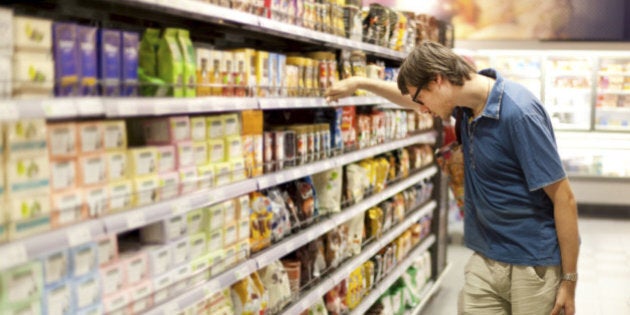
I frequently hear people complaining that gluten-free diets are extremely expensive.
And sure, there is certainly research to back up that claim. In 2008, Canadian researchers compared 56 gluten-free products to their wheaty counterparts and found that the gluten-free goods were 242 per cent more expensive. Three years ago, a British study found that cost of gluten-free goods was anywhere from 76 per cent to 518 per cent higher than glutenous foods.
Does that mean that it's impossible to save money on a gluten-free diet? Nope. I beg to differ -- I think eating gluten-free can actually save you money. Here's how.
Eat Real, Whole Unprocessed Foods
The studies like the ones I mentioned above compared gluten-free packaged products like crackers, breads, cookies, pasta, waffles and muffins. The fare that is labeled as "gluten-free." When companies put things into a package, it costs us more -- especially when those items need to be produced in gluten-free facilities.
I believe the foods that best support our health do not need splashy packaging with marketing claims slapped on them. When you walk through the produce aisles, you don't see separate sections with gluten-free broccoli, gluten-free apples or gluten-free spinach.
Fruits, vegetables, gluten-free whole grains, beans, legumes, nuts, seeds, wild fish and eggs are all naturally gluten-free ingredients, and they're less expensive than buying packaged gluten-free products. Eating real food also saves you money because of what you're not buying, which is all the junky stuff.
When I create customized plans for clients, I pack their meals with fresh and simple plant-based ingredients, not gluten-free bread and crackers. I'm not saying we can never include these products in our diets, but they don't need to be the staples.
Eat Real Food that Also Happens to be Cheap
If you spend your days relishing spoonfuls of creamy avocado, slicing juicy pineapples and mangos, guzzling raw coconut water and gorging on fancy superfoods from South America, then your food bill is going to skyrocket.
But I'm talking about the inexpensive whole foods.
Generally, carrots, celery, onions, garlic, spinach, apples, cabbage, bananas, sweet potatoes, oats, eggs, beans, lentils, brown rice, zucchini, cucumber, squash, sunflower seeds, pumpkin seeds, green peas and lettuce are all inexpensive options. You might think these foods are boring, but they're incredibly nutritious!
I encourage you to find the inexpensive foods in your town and buy them regularly. Focusing on those foods, instead of pricier items, will allow you to enjoy a lot of delicious meals for a fraction of the price.
Cook Foods from Scratch
We're fortunate to be living in a time when awareness about gluten-free living is growing. That means there are an increasing number of gluten-free options at restaurants, grocery stores, bakeries and farmers markets.
The problem? The price of that gluten-free muffin is exorbitant compared to what you'd spend if you made the same thing at home. The same goes for soup, sandwiches, salads, hamburgers, bread, or any other gluten-free food you buy instead of creating in your very own kitchen.
Homemade meals are always less expensive than eating out or buying pre-made gluten-free foods. With packaged meals, you often only get enough food for one meal. When you make food yourself, for the same price you can cook enough to last you for several days.
Also, when you cook at home, you can control exactly what goes into your food, which greatly reduces your chances of getting glutened.
Believe me, if you can read, you can learn to cook. When I first began to change my eating habits, I never cooked. Everything came out of a can, box or package. But you know what? I learned pretty quickly, because I had to for my health. Now, I can make most things from from scratch.
All you need to grasp is a few good, flexible recipes that you can change up depending on your mood, what's on sale, or what you need to use up from your fridge before it spoils.
Focus on a Plant-Based Diet
Animal products are incredibly expensive compared to plant products. Think about it: how much would you save if you cut down on meat and cheese?
Increase your consumption of vegetables, fruits, beans, legumes, whole grains, nuts and seeds. When you plan meals that focus on these foods, your grocery bills will go down. If reducing the amount of meat you consume seems overwhelming, try eating vegetarian for one day a week. The Meatless Monday movement offers tons of tips and suggestions for how to do this.
I'm not suggesting that you become vegan or vegetarian. I'm simply reminding you that meat is expensive, and you'll save money by eating less of it. Plant-based diets are associated with lower risks of obesity, heart disease, diabetes and cancer. Incidentally, complications from these conditions are the leading causes of death in the world.
More than Money-Saving
These tips will do more than increase your savings at the grocery store. They'll make you healthier, too. And that will save you money in the long-term, because you won't lose income due to illness or pay through the nose for health premiums due to chronic diseases.
MORE ON HUFFPOST: